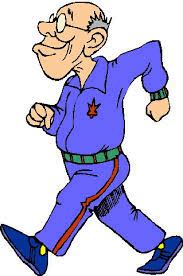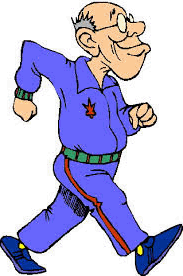Hucclecote Model Railway Show
At Hucclecote Methodist Church
June 2021
Vine Street - Chris Sharp 2mm N gauge
 The catalyst for Vine Street actually originated in 1966 when I purchased the Peco publication 60 Plans for Small Railways for princely sum of two and sixpence or twelve and a half pence in today’s money? It was at a time in my life when I wanted to build every single plan the booklet contained? I would spend hours visualising what the finished layouts would have looked like but never actually got around to building any of them, leastways not until later in my life. It was also the same time that I discovered N Gauge. Whilst working in Paris I happened upon a Minitrix local passenger set in a toy shop. I was fascinated that something so small could work so well so I purchased it. I still have it 47 years later? On return to the UK I started to collect continental N Gauge trains, rolling stock and buildings however, I never achieved a full working layout.
The catalyst for Vine Street actually originated in 1966 when I purchased the Peco publication 60 Plans for Small Railways for princely sum of two and sixpence or twelve and a half pence in today’s money? It was at a time in my life when I wanted to build every single plan the booklet contained? I would spend hours visualising what the finished layouts would have looked like but never actually got around to building any of them, leastways not until later in my life. It was also the same time that I discovered N Gauge. Whilst working in Paris I happened upon a Minitrix local passenger set in a toy shop. I was fascinated that something so small could work so well so I purchased it. I still have it 47 years later? On return to the UK I started to collect continental N Gauge trains, rolling stock and buildings however, I never achieved a full working layout.
Then followed a career in the Royal Navy, marriage, children and all the other domestic obligations that followed meant that any railway modelling was left firmly on the back burner. The years rolled by and towards the end of my sea going career I found my interest rekindled. Like all learning curves my early attempts were to say the least pretty dismal. I still thought I could build the whole of the BR network overnight? Then after much reading and attending exhibitions the light bulb switched on? It was time to apply the KISS principle (Keep it Simple Stupid). It was to be British outline and with a predominantly western region flavour. Enter Cyril Freezer and his layout plans. At first I built a couple of small fiddle yard to terminus layouts and tail chasers. It was when I read Iain Rice’s take on minories that Plan 49s, a small city terminus, became my EUREKA moment.
Vine Street is a shelf layout. The plan called for the layout to be built in a cutting but I reversed this and constructed it on a viaduct. I also made a small change to the track plan. The layout is eleven foot long and one foot wide and is built in three sections
The baseboard construction is no different from that of other modellers who described their bench work. It is different however, in the construction of the raised viaduct. As I also model HO American railroads I have taken to using foam sheets, the sort you put into wall cavities for insulation, which is very common in the States for baseboard construction. It is light and durable and it is also cheap but above all it does away with making wooden raised levels. Wood working has never been my strongest suite, even at school?
Wiring is kept very basic. The layout has been wired for either DC or DCC control. Why both, well as the range of n gauge models able to accept a chip and the price of these items is dropping my long term goal is to have all my locos running under digital control. I know there are for and against arguments but having created two American railroads that are solely DCC/sound and I became hooked. It is so versatile, but then each to his or her own?
Point control is also kept simple, its wire in tube so all twelve turnouts are virtually trouble free with all track and points being Peco code 55. Ballasting and painting the tracks sleepers and rail sides follows the time honoured descriptions found in most leading articles published elsewhere.
The most satisfying part for me is constructing the buildings. There is great satisfaction from scratch building. With the plethora of readymade buildings it has become very easy to plant what you need to achieve a very quick result. Why scratch building; it’s because when you have built something special and its yours and it meets your needs and if it looks right and it feels right, then it is right ?
Scratch building also allows you to get the right style of buildings for your layout in my case that western region flavour, that layout design element. Withstanding that some of the buildings are a mixture of highly modified Metcalf kits, resin models or scratch built from pictures of real buildings
The retaining wall for the viaduct is constructed from Metcalf brick sheets and mounting card. All nine feet of it? There is a lower access point for the station as well as the main entrance to Vine Street tube station. The stone lintels and capping etc are made from the card that comes in the Metcalf platform kit and trimmed to fit. I have also snuck in a couple of Lyddlend buildings, the Chapel and small garage to reflect the variety of inner city buildings that can be found in the outlying areas of most cities in the 50’s and 60’s. The terrace block is a Metcalf kit highly modified. I use Slater’s plastic roof tiles instead of the card ones supplied. This I find really brings the model up to a higher standard. I also use plastic rod to make the down pipes and gutters. The three blocks of flats are based on ones found in Brixton when the building boom took off to provide housing for Londoners at the end of the Second World War. The flat fronts are computer generated. These are mounted on card and then the rest of the building is built up it around it. It is a mixture of card and plastic strip. The factory is based on one in Birmingham and is again constructed from card. The windows on all my scratch built buildings are computer generated. Curtains are provided where necessary. When building up the model I place glazing strips behind the open windows and the carefully glue the printed window on top making sure they go on square. The pub and adjacent building are also based on those found in London. With the superb range of London buses available from Oxford models there had to be a London Transport bus Depot. Metcalf came to the rescue. The other road vehicles are a mixture of Oxford diecast and white metal kits
The station is also scratch built and is loosely based on More Street station. Again it is constructed from card. All the brickwork is again Metcalf’s brick sheets. The platform canopy is plastic sheet with thinly cut white sticky labels to form the spars and when completed the whole building was sprayed with a thin wash of dark paint to reduce the newness of the building. A final coat of humbrol matt was sprayed over the whole structure. This was a mistake as far as spraying the canopy. It does reduce the visibility of the detail below?
The little people are a mixture of various manufactures with over half hand painted. Currently the local population is around 130 figures and is on the increase?
Street furniture, traffic lights, lamp posts etc are white metal pieces. Signals are by Ratio.
The railway stock is predominately Graham Farish and Dapol with the exception of the “porthole” midland carriages which are hand built from card. But that is another story. Where suitable for the scene N gauge kits or ready built wagons are used.
The whole layout was designed for the exhibition circuit and to date has appeared at five exhibitions where it has been well received.
Constructing the layout took almost twelve months off and on to complete, if you actually ever completely finish one? Running it has its moments and some lessons have been learnt which will require some tweaking to get it right but then that’s the fun of this hobby. What’s next? Rebuild the fiddle yard by constructing a small extension.
Another EUREKA moment was joining the N Gauge Society. Not only do you get an outstanding bi-monthly journal but access to the society’s shop, help line and library all of which help towards recreating your own personal railway world. Of course on line shopping has change the nations shopping habits but I still find a visit to my local model shop more rewarding. In my case it’s the friendly service that The Hereford Model Centre offers in meeting all my needs. No I do not have a vested interest other than being a very satisfied customer and finally to my very understanding wife whose support has been outstanding in my pursuit of trying to recreate my little piece of railway heaven.




